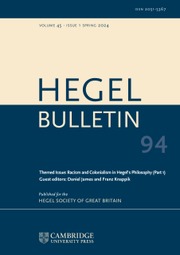No CrossRef data available.
Article contents
A Wunderblume and Her Friends: How Bettina Brentano-von Arnim Develops Individuality Through Dialogue
Published online by Cambridge University Press: 19 July 2022
Abstract
Bettina Brentano-von Arnim (1785–1859) is one of the most fascinating writers of German Romanticism. After a late, but spectacular start to her career as an author with the biographically inspired Goethe's Correspondence with a Child (1835) that boldly claims the legacy of Germany's most admired poet, Bettina continues to explore the realm of biography, but also widens her perspective to the pressing social questions of her time. Her message is entertaining, yet clear: we need a new way of thinking that engages the whole human being who understands and accepts her rational as well as sensible side, who is situated in a society and engages in dialogue with others. Accordingly, her work is an apt example of the practice of symphilosophy in late German Romanticism. This paper will concentrate on the notion of self-formation through dialogue in her letter books, and the political-aesthetic idea of a ‘king for the people’ that guided Brentano-von Arnim's political engagement in the 1840s.
- Type
- Research Article
- Information
- Hegel Bulletin , Volume 43 , Special Issue 3: Women Philosophers in Hegel's Time , December 2022 , pp. 418 - 437
- Copyright
- Copyright © The Author(s), 2022. Published by Cambridge University Press on behalf of The Hegel Society of Great Britain



